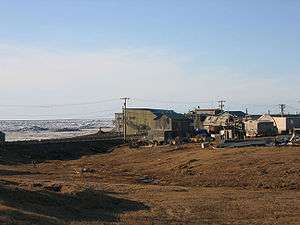Tundra
The tundra is an important biome between the coldest parts of the Arctic or Antarctic and the temperate climates found in Northern Europe and southern Canada. The characteristic feature of tundra is the permafrost: in summer, only the surface will thaw, but if you dig deep enough, you will always find frozen ground.
Understand
| Nome, Alaska | ||||||||||||||||||||||||||||||||||||||||||||||||||||||||||||
|---|---|---|---|---|---|---|---|---|---|---|---|---|---|---|---|---|---|---|---|---|---|---|---|---|---|---|---|---|---|---|---|---|---|---|---|---|---|---|---|---|---|---|---|---|---|---|---|---|---|---|---|---|---|---|---|---|---|---|---|---|
| Climate chart (explanation) | ||||||||||||||||||||||||||||||||||||||||||||||||||||||||||||
| ||||||||||||||||||||||||||||||||||||||||||||||||||||||||||||
| ||||||||||||||||||||||||||||||||||||||||||||||||||||||||||||

This biome is known for its large, grassy plains where it never gets hot due to the latitude, which reaches as far north as the Arctic Circle and beyond. Tundra regions are more remote than temperate grassland regions, where farming is common.
On the right is a graph showing average temperatures (Fahrenheit) for Nome, Alaska. The dotted line that goes through the center of the graph marks freezing temperature, 32 °F (0 °C). When you think about it, that line is on the high side of the temperature data; in other words, freezing temperature is warm in the tundra.
However, there are some things about the tundra that are special, similar to those in the Arctic:
- Aurora borealis, where there are displays of green lights in the air
- The Midnight Sun, if you're north of the Arctic Circle
Destinations
Tundra appears on latitudes between 55 and 75 degrees. In the northern hemisphere, most of this band is part of North America, Europe and Asia.
- Alaska — 🌍 Nome and the 🌍 North Slope are destinations
- Much of northern Canada
- Coastal Greenland
- Iceland
- The northernmost portion of the Nordic countries as well as 🌍 Svalbard.
- The northern coastline of Russia, as well as many of its Arctic islands.
In the southern hemisphere, these latitudes are mostly covered by ocean. Tundra-like conditions appear in Patagonia and on islands in the Antarctic Ocean.
Stay safe
Like anywhere that is remote, safety risks increase, and the cold weather that dominates the region makes this problem only worse. Follow the instructions in the articles cold weather and severe weather for detailed information about surviving in cold weather.